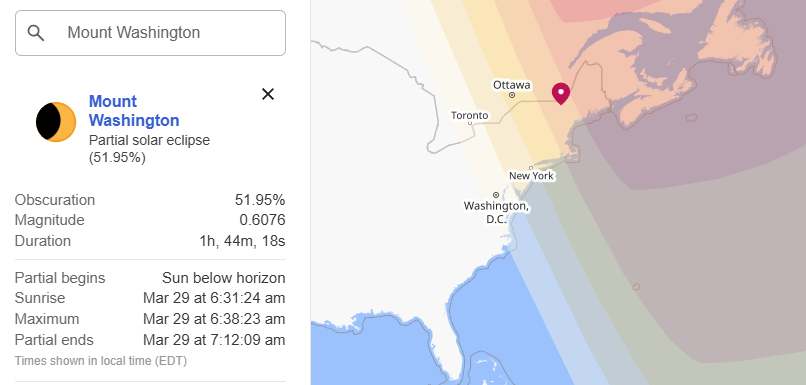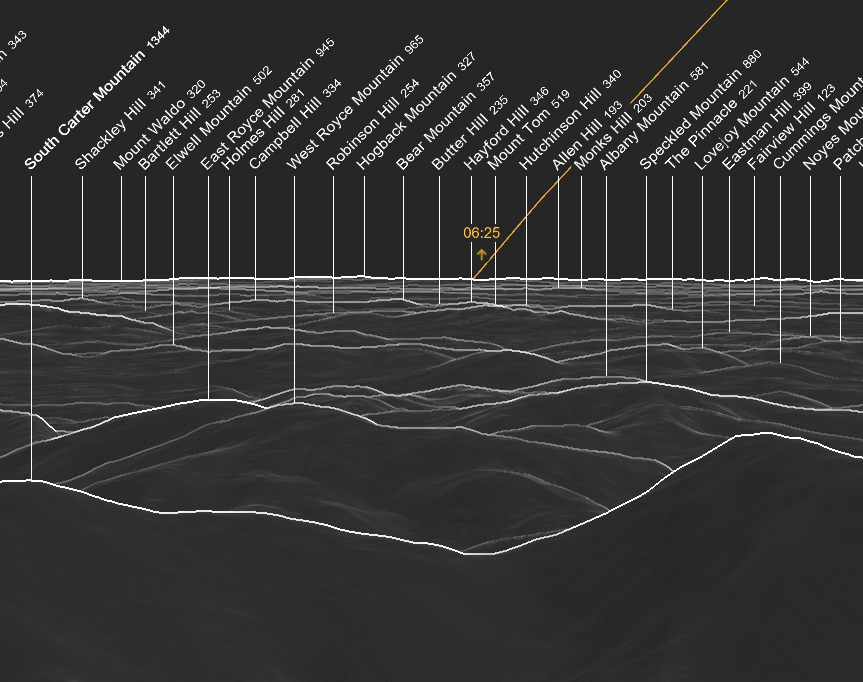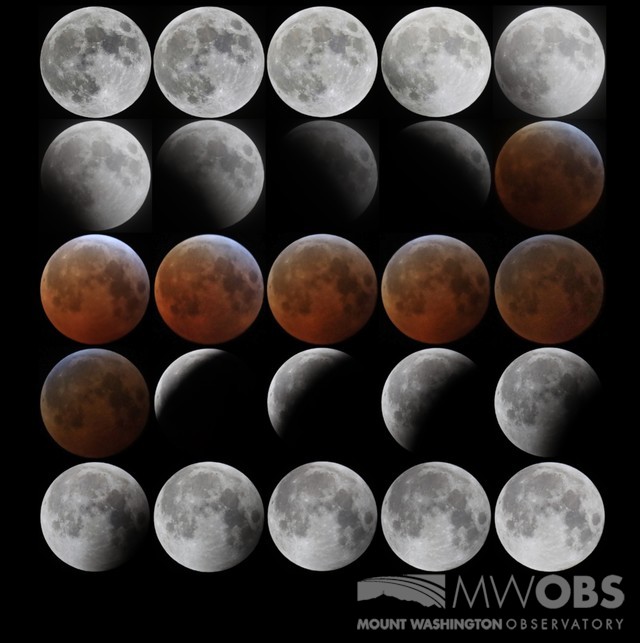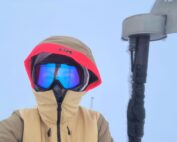One Down, One to Go
By Ryan Knapp
On my calendar for March 2025, I had two reminders of events to look forward to in the sky. The first occurred this past week with a total lunar eclipse and for the second, that occurs on my next shift with the possibility of viewing a partial solar eclipse. For the first event, we lucked out and had nearly clear skies which allowed for viewing of the total lunar eclipse from start to finish over the night of March 13/14. For the second event, the weather cooperating and allowing for the possibility of viewing it is still unknown at this point as it is too far out for me to make a solid forecast. Having worked here as long as I have, I know the odds are stacked against me. The summit of Mt Washington, NH is typically not an ideal location to view celestial events since the summit spends over 60% of the year in the clouds (fog) and when we are clear, skies are statistically skewed towards partly to mostly cloudy conditions. And if an event occurs while I am working on the summit, this also means that if we are socked in the clouds or under a layer of clouds, I am unable to just hop into my car and move to a location that might have favorable conditions. While the weather is an unknown at this point, I can at least get all my ducks in a row just in case we luck out.
The partial solar eclipse will occur during the morning of Saturday, 29 March and is expected to begin at 0527 EDT which will be out of sight for our location as the sun will still be below the horizon. We will be able to start viewing it already in progress at sunrise which will be at 0625 EDT for our location. The maximum eclipse (or peak coverage) will occur shortly after at 0638 EDT with an obscuration of 51.95% and a magnitude of 0.6076. This means solar eclipse glasses and solar filters on camera lenses must be worn throughout the viewing. The partial eclipse will then end at 0712 EDT.

Partial Solar Eclipse viewing times and locations. Source: www.timeanddate.com
Luckily, the sun will be rising in a location that will be easy to aim my camera at. If I have favorable visibility, I just need to find the saddle between Mt Hight and South Carter Mountain and then tilt my lens straight up and out to the distant horizon. Since the eclipse will already be occurring at sunrise, I will have to hope for a clear day ahead of the event so that I can get my lens focused to infinity with my solar filter attached (and then hope not to bump anything out of focus before the eclipse). Since a solar filter is pretty much like welding glass, this is not something I can wait to do overnight, so I have to plan ahead. And then the last step will be to dial in all the appropriate settings in my camera to get the correct exposure from the get go. Luckily, I have photographed a few partial solar eclipses, so I can go back and look at the metadata for the settings I used previously with similar coverage and hopefully be able to get those dialed in the night prior. If I am really lucky, I can maybe even get some practice in the morning prior; but we will have to see if the weather works in my favor.

Location of sunrise for 29 March 2025 from the summit of Mt Washington, NH Source: peakfinder.org
Since the weather cooperated with the total lunar eclipse, I was able to get a sequence of shots and create the collage below. For those interested, here is my gear and the settings I used to gather the shots for that collage:
Gear:
The camera was a Canon R (with a remote trigger attached during totality).
The lens was RF 800mm f/11 IS.
The tripod was a heavily weighted mount.
Settings:
At the start, the moon was bright, so F-stop was f/11, exposure time was 1/250 sec, ISO was 100, with a focal length of 800mm shot in JPEG+RAW format without a tripod.
At the partial eclipse, the F-stop was f/11, exposure time was 1/125 to 1/80 sec, ISO was 250 to 400 (250 as it started and 400 as it slivered), focal length was 800mm and shot in JPEG+RAW format without a tripod.
At total eclipse, the F-stop was as wide as my lens allowed at 800mm which is f/11, exposure time was 1/4 sec, ISO was 6400, and it was shot in JPEG+RAW format with a tripod.
Methodology:
Winds were 30 to 40 mph on the summit, so I had to shoot in a sheltered area to minimize shaking from the winds. Due to the winds, exposure times and ISO settings are higher than what I likely would have used in calmer conditions in the valley. During totality and the camera was on a tripod, a remote trigger was used to minimize shaking from hitting the shutter button. Image stabilization and auto-focus were turned off as those can sometimes blur an image at night; auto-focus can be bad during totality as the moon is not bright enough with enough contrast for it to work effectively and IS tries to compensate but usually overcompensates at night making it blurrier than having it off. The earth and moons movements are easily picked up when zoomed in, so a fast exposure time is ideal which sounds counterintuitive to those that have shot stars or other night scenes. However, since the moon is so bright (at least for the start and end of the eclipse), a small aperture and fast shutter time could be utilized easily to keep things sharp. However, because of these short times and small apertures, stars were not present in the image as they are not bright enough to be captured. And I created a timeline from start to finish and then divided it up into equal increments so I knew when to go outside and capture a shot. When all the images were captured, I cropped and stitched the collage below.

Supporter Spotlight: Ryan Shepard
Supporter Spotlight: Ryan Shepard By Ryan Shepard and Carissa Milliman Ever since I was a kid, living in Western New York and growing up with lake effect snow, I thought harsh weather was incredibly
Supporter Spotlight: Erik Rider
Supporter Spotlight: Erik Rider By Wendy Almeida For Erik Rider, supporting Mount Washington Observatory comes from a lifelong fascination with weather and how it shapes daily life. Growing up along the Massachusetts coast, he
An Autumn Above the Clouds on Mount Washington
An Autumn Above the Clouds on Mount Washington By Cassie Farnsworth I don’t know how many times in life you get to say “it was exactly what I hoped it would be,” but my


